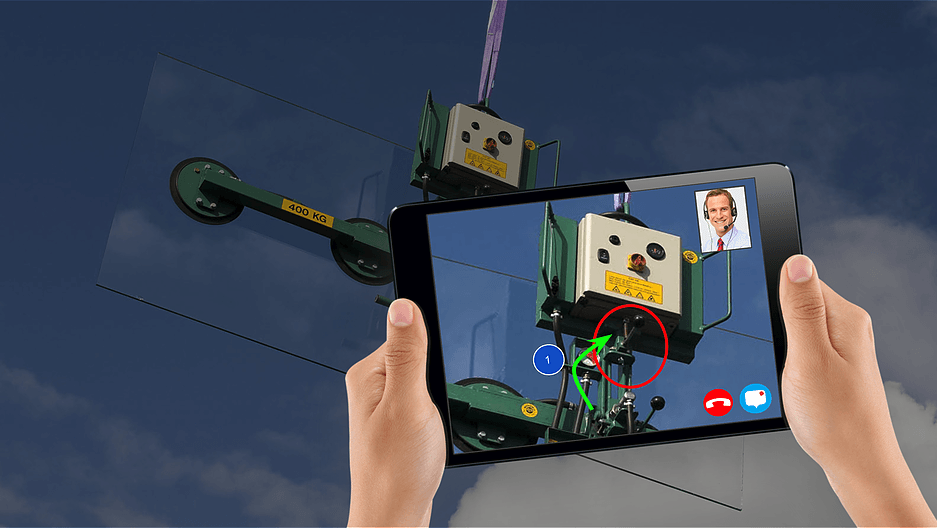The High Cost of Solving the Wrong Problem
There’s a good chance you’ve heard the saying, “If it ain’t broke, don’t fix it.” But what happens when you do? The result can be costly.
Your customer care center should only invest in solving the right problems. If you’ve got the problem wrong, you’re wasting time and money on unnecessary fixes. In this article, we’ll explain how the costs of solving the wrong problem add up and how using video calling technology in your customer care center can cut those costs by ensuring agents get the problem right.
Solving the Wrong Problem Is Expensive
Imagine that one of your agents is on the phone with a customer whose WiFi isn’t working. They insist that their modem must be broken. The agent suggests restarting the modem. The customer says they restarted the modem, but the WiFi’s still down.
But a broken modem isn’t really the issue.
The customer’s telling the agent that they’ve restarted the modem, but they’re actually restarting the router. And the agent has no way of knowing this because they can’t see the device the customer is working with.
To fix the modem issue, you’d likely request an equipment return – and, in so doing, attempt to solve the wrong problem.
When agents don’t have the tools to more accurately assess customer concerns, it’s tempting to overservice with cautious, fail-safe solutions. But misdiagnosing problems can have serious consequences. Instead of solving the real issue the customer has, you might end up solving a more expensive problem in the form of unnecessary product returns or truck rolls.
In the retail industry, for example, the cost of product returns approached $550 billion in 2020. Automotive retailers processed returns for nearly one in five products.
Here’s a reminder of just a few factors rolled into the cost of product returns:
- Return shipping costs for the “broken” product
- Shipping costs for the replacement product
- The replacement product itself
- Product refurbishment
- The potential need to resell at a discount
And what about the cost of truck rolls for companies that dispatch field workers to service equipment?
In the United States, companies pay roughly $130 per truck roll. Then there’s the time cost – field workers spend time traveling to and from service sites, in addition to the time spent servicing equipment.
At scale, the costs of product returns and truck rolls add up.
Customer care agents need ways to identify the right problem so that your company only pays for the costliest solutions when they’re necessary.
Save Money by Using the Right Tools to Diagnose Customer Problems
Your customer care center is probably used to resolving customer concerns over the phone. But regular phone calls have limitations that make it easy to misdiagnose problems.
To start, customers may describe equipment issues in a way that’s confusing or leaves out critical information. Here are a few common reasons for miscommunication:
- They don’t know the right words to describe the problem.
- They don’t share the same primary language as the agent.
- They might be frustrated with the progress to issue resolution.
- They might be short on time.
And this miscommunication can go both ways: it can also be difficult for agents to walk customers through complicated troubleshooting. Even if the agent knows the right steps, they might not know how to phrase them in a way that makes sense to the customer.
When troubleshooting isn’t properly executed – by either the agent or customer – the result is often an expensive fail-safe solution. To correctly diagnose problems and smooth out the troubleshooting process, your agents need a way to get eyes on the problem.
That’s where video calling technology comes in.
When your agents can see customers’ products, there’s very little guesswork – no need to rely on the customer to accurately describe their issues.
With video calling technology, agents can also verify that the customer has completed each troubleshooting step before moving on. That makes their job easier and minimizes error down the road.
Your company will save money when your agents identify problems correctly the first time. Without unnecessary truck rolls or product returns, you only pay for expensive solutions when you need to.
It’s Worth Taking the Time to Get the Problem Right
Some customer care centers may be concerned about adopting video calling technology because the potential for longer calls is at odds with low average handle time (AHT), a primary KPI in many organizations.
But we promise it’s worth spending the time to correctly identify customer concerns. Although video calling technology might extend call times, your agents will likely resolve more problems on the first contact, resulting in faster and less expensive solutions overall.
Video calling technology makes it easier for your agents to identify the right problem – and solution – in one go. And, again, you save money by cutting out an unnecessary truck roll or equipment return.
And if the correct issue does require a more expensive fix? That’s okay – you have budget for the essentials because you’ve trimmed the fat.
To generate these cost savings, your customer care center may need a KPI change. If you deemphasize low AHT and prioritize issue resolution, you can incentivize your agents to find the right solutions for the right problems.
Solve the Right Problem with Blitzz
Your customer care center – and your company – shouldn’t be spending time and money solving problems that don’t need fixing. With Blitzz’s video calling technology, you can get your eyes on the right problem. Your agents can troubleshoot better so you only pay for solutions when you need to.
Excited about cutting costs with Blitzz? Try out a demo to see firsthand how Blitzz can help your team.




